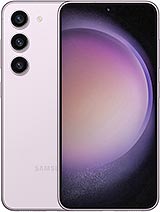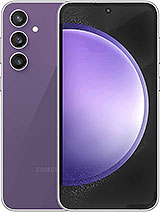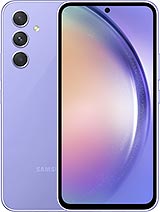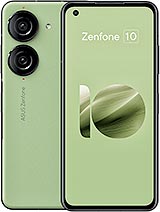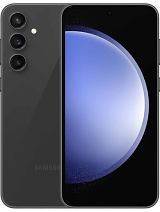Samsung Galaxy S23 FE review

Display
The Galaxy S23 FE appears to pack the same display as the S21 FE - it's a 6.4-inch Dynamic AMOLED 2X panel with extended 1080p resolution and 120Hz refresh rate. Naturally, there is support for HDR10+ content.

The actual resolution is 2,340 x 1,080 pixels or 403ppi, which is quite a decent sharpness these days. There is no information on the touch sampling, but it should be up to 240Hz as it was on the S21 FE.
Samsung has listed the peak brightness as up to 1,450 nits, and that's the only official number we got for screen performance.
We have completed our display test, and the numbers are a bit higher than on the S21 FE. The maximum brightness we measured when controlling it manually was 451 nits for the Snapdragon and 478nits for the Exynos model. The maximum automatic brightness was 985 nits for the Snapdragon and 1,007 nits for the Exynos variant.
We can confirm the display can go beyond 1,300 nits on a small patch of white, so the promised 1,450 nits of peak brightness is surely possible.
The minimum brightness at point white was just 1.6 nits.
Color accuracy
The Galaxy S23 FE offers two color modes - Vivid (wide color, DCI-P3) and Natural (standard color, sRGB). The accuracy of both is consistently great across both displays - both modes are accurate towards DCI-P3 (average deltaE of 3.5) and sRGB targets (average deltaE of 2.4).
The Vivid mode has a slightly cooler color temperature compared to the Natural one, but you can tune the temperature via a dedicated slider and get similar results.
You can also tune RGB saturation to your liking if that's your thing.
Refresh rate
The Samsung Galaxy S23 FE has two Motion Smoothness modes - Adaptive and Standard. According to the description, the Adaptive one switches automatically between 60Hz and 120Hz, while the Standard is fixed at 60Hz for longer battery life.

When using the Adaptive mode, we saw the screen use 120Hz across the interface and all compatible apps and many games (excluding those limited to 60Hz by the developer). When the picture is static, or you are playing/streaming videos, then the software quickly dials down to 60Hz.
The Always-on display works at 60Hz refresh rate, too.
Streaming and HDR
The Samsung Galaxy S23 FE display supports HDR10+, which is recognized by all popular streaming apps. And thanks to the Widevine L1 support, they all stream high-resolution HDR10 content hassle-free.
Battery life
The Galaxy S23 FE is powered by a 4,500mAh battery - the same capacity as the S21 FE and also the S22+. The new 4nm chipset should allow for improved battery life over the previous model.
The Snapdragon model turned out to be the better performer. It gauged a 9:45h active use time vs. 8:28h on the Exynos version.
The two models were neck and neck when it comes to web browsing and social media apps, but the Snapdragon version edged ahead by around 20% in every other scenario.
Charging speed
The Samsung Galaxy S23 FE supports up to 25W fast wired charging and up to 15W fast wireless charging. There is also support for reverse wireless charging.
The S23 FE ships without a charger, as usual. You can use any 25W PD+PPS charger, as it will reach the max charging power supported by the phone.

We carried out our charging test with Samsung's own 25W PD/PPS charger.
It recharged 30% of the Galaxy S23 FE battery in 15 minutes, while another 15 minutes will get you to 58%. A full charge requires 84 minutes. Those numbers are in line with the Galaxy S21 FE's.
The battery options include features like Power Saving mode, Adaptive Battery (puts some apps to sleep automatically), enable/disable fast wired and wireless charging. There is also the Protect Battery option, which limits the battery's maximum charge to 85% to prolong the battery's lifespan.
Speakers - loudness and quality
The Galaxy S23 FE has a hybrid stereo setup, meaning the front-facing earpiece doubles as a speaker, while the one at that bottom is the main one and is usually louder and more bassy than the top one.

The sound balance is quite nice, though, and we have nothing but positive impressions.
The Galaxy S23 FE speakers scored a Very Good mark on our loudness test, an upgrade over the Good mark from the Galaxy S21 FE. And you can hear the difference, too. The new speakers offer richer and deeper output with a lot more bass, much better vocals, and good high-frequency presentation.
Use the Playback controls to listen to the phone sample recordings (best use headphones). We measure the average loudness of the speakers in LUFS. A lower absolute value means a louder sound. A look at the frequency response chart will tell you how far off the ideal "0db" flat line is the reproduction of the bass, treble, and mid frequencies. You can add more phones to compare how they differ. The scores and ratings are not comparable with our older loudspeaker test. Learn more about how we test here.
Reader comments
- Faz
- 06 Apr 2025
- pKb
Absolutelt disaapointing product, much slower than my 6 year old iphone, Cant beleive samsung selling poor quality
- fay
- 11 Mar 2025
- LyW
After one year of being using this phone I have to say I hate the battery life. Imagine you're on vacation taking photos and videos, the battery won't make it half day without needing to be charged. Battery life is by far the most frus...
- Rajan Dobariya
- 23 Jan 2025
- rKS
Not bettery satisfied Poor bettery 3/10
